Masonville Cove and Skipjack Sigsbee, September 2014

| Sarah arranged another field trip with the Johns Hopkins program for the three of us (see Philadelphia: Franklin Institute and Independence Hall and Jefferson Patterson Park and Museum). This time we visited the Masonville Cove Environmental Education Center which included a trip on the Skipjack Sigsbee. I think we all decided the skipjack trip was the highlight — though Masonville Cove was a nice facility with great staff. |
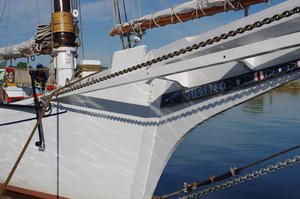
|

|
| We happened to be in the group for the morning skipjack trip so I think we had the best weather -- it was spectacular! The paid crew quickly put the volunteer crew to work raising the sails. Robert was on the team raising the jib. A larger team was put to work raising the mainsail. (It wasn't really windy so the sails were mostly for show and shade.) |
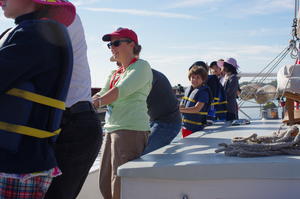
|
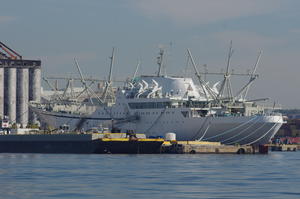
| An early bit of trivia the crew passed along as we motored down the Patapsco River: The Savannah, one of the very few nuclear powered cargo ships, is moored in Baltimore. It was only active for a few years and apparently lost money the whole time because you have to have a much more highly trained crew when your engine is nuclear. After 9/11, they removed the radioactive bits and now it's just for display — an early prop in Eisenhower's "Atoms for Peace" campaign. |
| The kids and parents were divided into three groups. Our first session was on navigation and nautical charts. Throughout the trip, kids were called out of the sessions to take turn at the helm. Robert and his helm's mate seemed to getting a little close to something... |
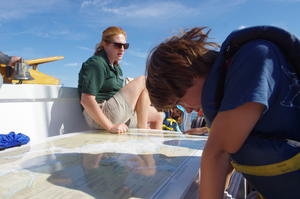
|
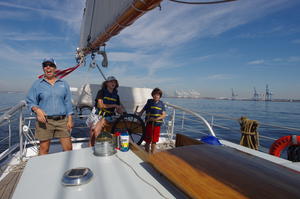
|

|
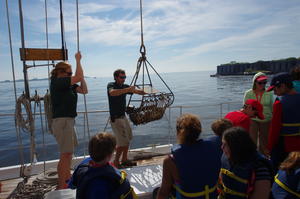
| As a skipjack, with over 100 years on the water (88 of those actively oystering), of course we had to dredge up some oysters. The crew pointed out that this dredge is significantly smaller than what was used in active service. They just wanted to see what they could come up with for the class. |
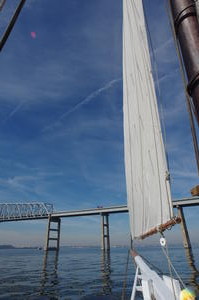
|
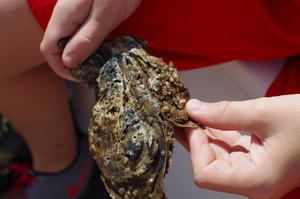
|
|
Our second session was on testing water quality. Robert and Sarah found the dissolved oxygen (tested at mouth of the river) to be very healthy. Others in our group found the Ph to be just a little bit basic, but not at all unhealthy, and the salinity was right in line with expectations at the top of the Chesapeake Bay. The third small group activity was to look at a crab and some of the fish the crab was likely to eat. That continued the discussion of what lives in the Chesapeake and how that's changed over time. |
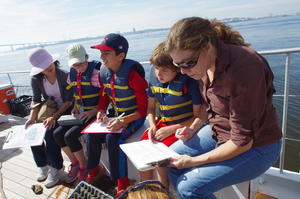
|
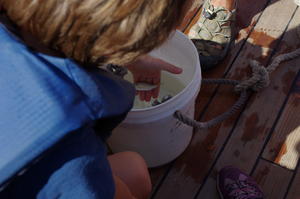
|

|
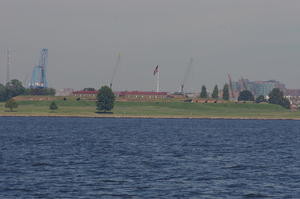
| We almost didn't notice sailing by Fort McHenry — just a couple days after the 200th anniversary of the battle that gave us "The Star Spangled Banner." Before this trip, I had no idea that there was a special buoy anchored at the spot where Francis Scott Key saw the flag that September morning 200 years ago — it's a long way from the fort. |
| At the start of the trip, each group of 3 or so was handed a sheet of aluminum foil, four popsicle sticks and a little bit of duct tape and told to build a boat. As we came back to the dock for lunch, the boats were tested to see how many ounces of lead they could hold. Robert and I did pretty well with 8 ounces (the winner was 11) and one unlucky design turtled on it's first ounce and couldn't hold any. |
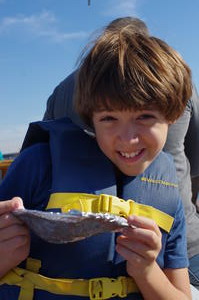
|
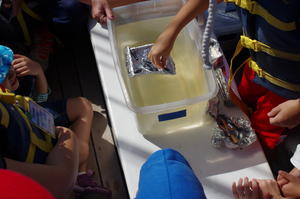
|
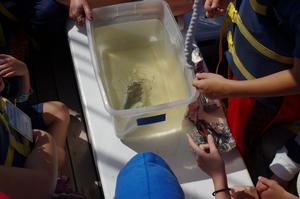
|

| After lunch, we had several sessions on the grounds of Masonville Cove Environmental Education Center. We got to learn a bit about plankton and look for some in the samples from river water. There was as chance to go geocaching (although we think the earlier group moved box 5 well beyond the expected coordinates). And we wound up the day talking more about oysters; Robert decided he's not a fan of dissecting (actually, he already knew that from classes a school). |
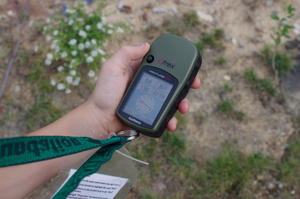
|

|
| We're not sure when our next trip with this group will be but we're looking forward to it. So far, they have all been winners. |
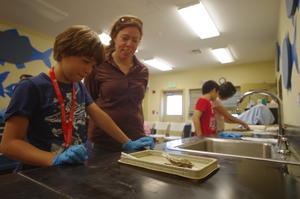
|
Vacation notes:
Home | Personal | Professional | News and Updates | Robert | Vacations | Genealogy | Search | |